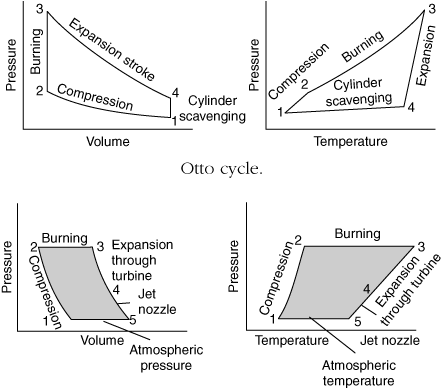engine cycle — variklio ciklas statusas T sritis Energetika apibrėžtis Periodiškai pasikartojančių procesų seka šiluminiame variklyje (stūmokliniame ar kito tipo). Idealusis variklio ciklas gali būti pavaizduotas grafiškai uždara kreive, kurią sudaro linijos,… … Aiškinamasis šiluminės ir branduolinės technikos terminų žodynas
Engine — This article is about a machine to convert energy into useful mechanical motion. For other uses of engine, see Engine (disambiguation). For other uses of motor, see Motor (disambiguation). A V6 internal combustion engine from a Mercedes car An… … Wikipedia
Engine control unit — An engine control unit (ECU) is an electronic control unit which controls various aspects of an internal combustion engine s operation. The simplest ECUs control only the quantity of fuel injected into each cylinder each engine cycle. More… … Wikipedia
cycle du moteur — variklio ciklas statusas T sritis Energetika apibrėžtis Periodiškai pasikartojančių procesų seka šiluminiame variklyje (stūmokliniame ar kito tipo). Idealusis variklio ciklas gali būti pavaizduotas grafiškai uždara kreive, kurią sudaro linijos,… … Aiškinamasis šiluminės ir branduolinės technikos terminų žodynas
engine displacement — noun The total volume of air/fuel mixture an engine can draw in during one complete engine cycle … Wiktionary
Engine efficiency — of thermal engines is the relationship between the total energy contained in the fuel, and the amount of energy used to perform useful work. There are two classifications of thermal engines (1) Internal combustion (gasoline, diesel and gas… … Wikipedia
Cycle Atkinson — Cycle d Atkinson Le cycle d Atkinson est un cycle thermodynamique utilisé dans un moteur à explosion. Il a été inventé par James Atkinson en 1882. Ce cycle, qui utilise une détente plus grande que la compression, améliore le rendement au prix d… … Wikipédia en Français
Engine cooling — is cooling an engine, typically using either air or liquid.OverviewHeat engines generate mechanical power by extracting energy from heat flows, much as a water wheel extracts mechanical power from a flow of mass falling through a distance.… … Wikipedia
engine — A device for changing fuel energy to mechanical energy. The term applies to the primary source of power generation. In Britain there is a desire to make a clear distinction between engine and motor so that motor refers only to electric power… … Dictionary of automotive terms
Cycle d'Atkinson — Le cycle d Atkinson est un cycle thermodynamique utilisé dans un moteur à explosion. Il a été inventé par James Atkinson en 1882. Ce cycle, qui utilise une détente plus grande que la compression, améliore le rendement au prix d une puissance plus … Wikipédia en Français
 Brayton cycle.ii. A specific activity in an engine such as from one start to the switch-off of the engine, one advance and retard of the engine, etc. For ease of record keeping within airlines, cycles are recorded as one takeoff and landing. The recording of cycles such as the times the engine has been started and switched off and the times the throttle has been advanced and retarded require special recording procedures for maintenance runs.
Brayton cycle.ii. A specific activity in an engine such as from one start to the switch-off of the engine, one advance and retard of the engine, etc. For ease of record keeping within airlines, cycles are recorded as one takeoff and landing. The recording of cycles such as the times the engine has been started and switched off and the times the throttle has been advanced and retarded require special recording procedures for maintenance runs.